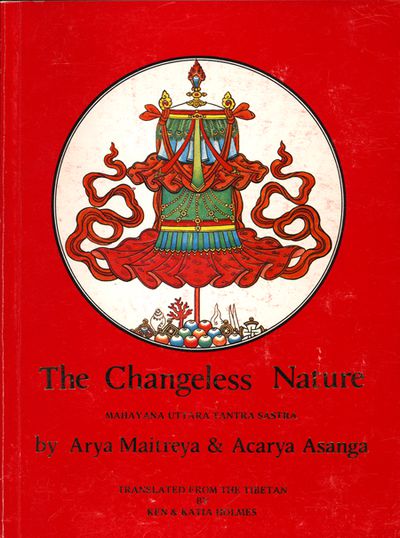- Translators' Introductionp. 3
- THE TEXT
- Introduction: the seven vajra pointsp. 13
- PART ONE: THE ACHIEVEMENT: THE THREE JEWELS
- First Vajra Point: the buddhap. 17
- Second Vajra Point: the dharmap. 19
- Third Vajra Point: the sanghap. 21
- PART TWO: THE BASIS FOR THIS ACHIEVEMENT
- General Comment on these Last Four Vajra Pointsp. 29
- Fourth Vajra Point: buddha-naturep. 31
- 1. Summary:
- A. 3 reasons why beings have itp. 31
- 2. Detailed Presentation
- B. 10 aspects of buddha-potential
- naturep. 33
- causep. 33
- fruitp. 35
- functionp. 35
- endowments p. 37
- approachp. 37
- phasesp. 39
- all-pervasivenessp. 39
- inalterabilityp. 39
- inseparability from its qualitiesp. 49
- B. 10 aspects of buddha-potential
- C. 9 examples
- the examplesp. 51
- summary and meaning of examplesp. 61
- C. 9 examples
- D. Purpose of teachings on buddha-naturep. 69
- Fifth Vajra Point: enlightenment
- its naturep. 77
- causep. 77
- fruitp. 79
- functionp. 81
- endowmentsp. 85
- actualisationp. 87
- permanencep. 97
- inconceivabilityp. 99
- Sixth Vajra Point: the qualities of buddhahood
- 1. synopsis in terms of two sorts of kayap. 103
- 2. detailed explanation of each
- the qualities of freedom—ultimately-true kaya
- 10 powers of perfect knowledgep. 105
- 4 kinds of fearlessnessp. 107
- 18 distinctive qualitiesp. 107
- the qualities of maturity—relatively-true kayas
- the 32 marks of a perfect beingp. 111
- 3. scriptural sourcep. 113
- 4. recapitulation of the examplesp. 113
- Seventh Vajra Point : buddha-activity
- 1. synopsisp. 119
- 2. detailed explanation
- spontaneityp. 121
- unceasingnessp. 121
- 3. expanded explanation through 9 examplesp. 123
- purpose and significance of examplesp. 141
- review of examples to show their sublimenessp. 145
- PART THREE: CONCLUSION
- 1. the benefits of this textp. 151
- 2. how this Sastra was composedp. 155
- 3. dedicationp. 159
- NOTES
- Translators Introductionp. 163
- Part Onep. 163
- Part Two : buddha-naturep. 167
- enlightenmentp. 171
- qualitiesp. 174
- activityp. 175
- Part Threep. 176


